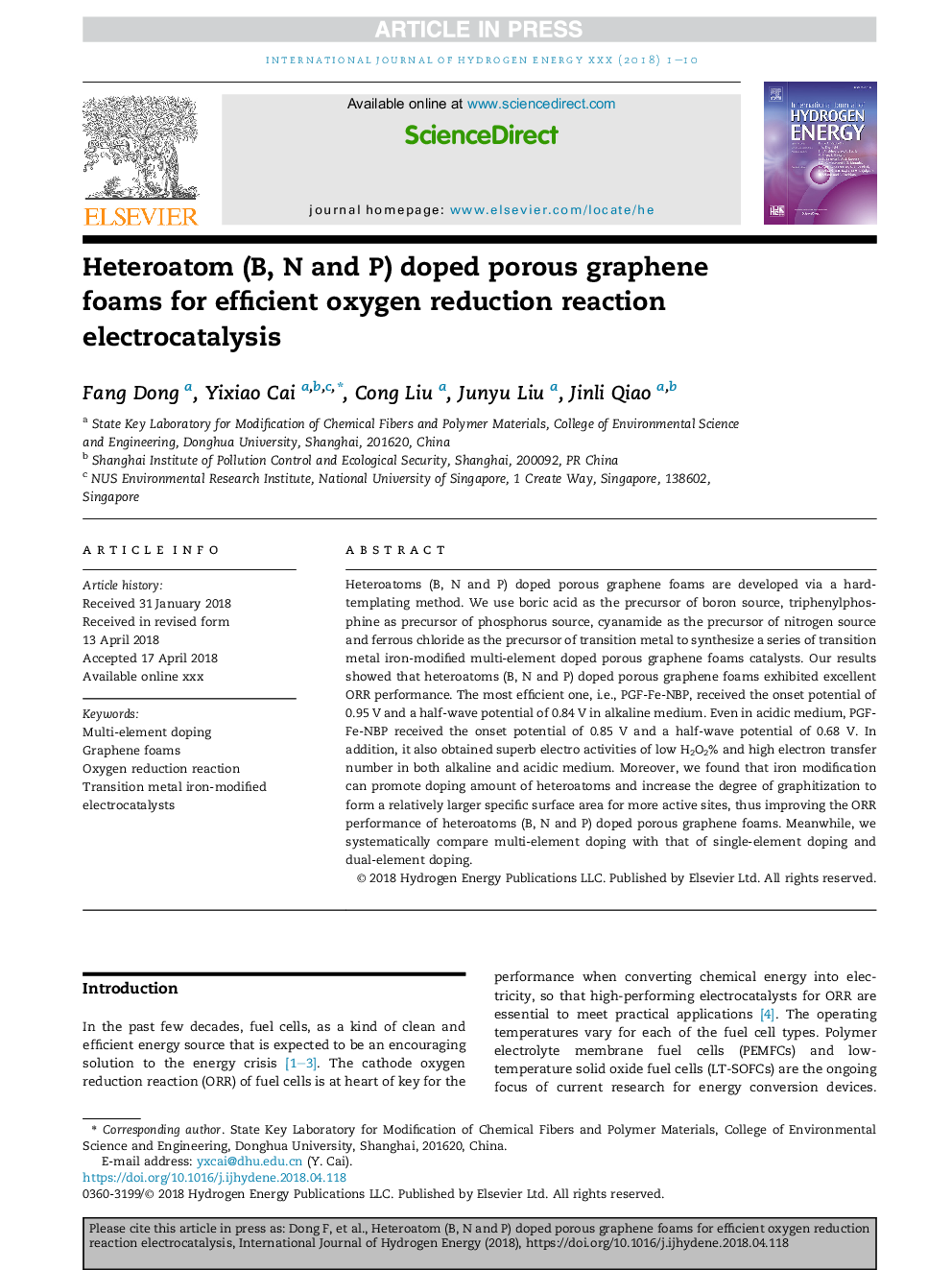| Article ID | Journal | Published Year | Pages | File Type |
|---|---|---|---|---|
| 7705448 | International Journal of Hydrogen Energy | 2018 | 10 Pages |
Abstract
Heteroatoms (B, N and P) doped porous graphene foams are developed via a hard-templating method. We use boric acid as the precursor of boron source, triphenylphosphine as precursor of phosphorus source, cyanamide as the precursor of nitrogen source and ferrous chloride as the precursor of transition metal to synthesize a series of transition metal iron-modified multi-element doped porous graphene foams catalysts. Our results showed that heteroatoms (B, N and P) doped porous graphene foams exhibited excellent ORR performance. The most efficient one, i.e., PGF-Fe-NBP, received the onset potential of 0.95Â V and a half-wave potential of 0.84Â V in alkaline medium. Even in acidic medium, PGF-Fe-NBP received the onset potential of 0.85Â V and a half-wave potential of 0.68Â V. In addition, it also obtained superb electro activities of low H2O2% and high electron transfer number in both alkaline and acidic medium. Moreover, we found that iron modification can promote doping amount of heteroatoms and increase the degree of graphitization to form a relatively larger specific surface area for more active sites, thus improving the ORR performance of heteroatoms (B, N and P) doped porous graphene foams. Meanwhile, we systematically compare multi-element doping with that of single-element doping and dual-element doping.
Keywords
Related Topics
Physical Sciences and Engineering
Chemistry
Electrochemistry
Authors
Fang Dong, Yixiao Cai, Cong Liu, Junyu Liu, Jinli Qiao,
